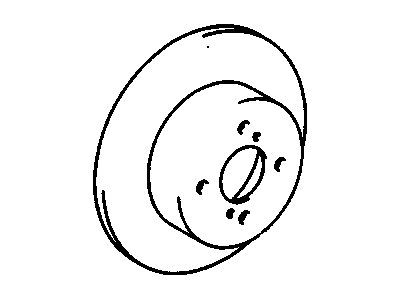
My Garage
My Account
Cart
Genuine Chevrolet Nova Brake Disc
Disc Rotor- Select Vehicle by Model
- Select Vehicle by VIN
Select Vehicle by Model
orMake
Model
Year
Select Vehicle by VIN
For the most accurate results, select vehicle by your VIN (Vehicle Identification Number).
2 Brake Discs found
Chevrolet Nova Brake Disc
Chevrolet Nova Brake Disc is part of disc brake thus functioning as the friction surface on which the brake pad press to reduce or stop this car. Sitting to the axial or the hub, it spins with the wheel where when applying the break, the hydraulic pressure pushes the caliper to squeeze the pads on the rotor. This design makes it easy and possible to remove heat and this is even more evident in such rotors as the vented rotors that have cooling fins. Chevrolet Nova cars have, from time to time used the following types of Brake Discs, Solid and Vented types. The solid rotors are common in the compact car models that are not classified as performance vehicles whereas the vented rotors are fitted to the front wheels as they experience more loads resulting in greater heat buildup. The major differences between these types are connected with cooling and characteristics of rotors, where vented rotors are the optimal. This is to stress the importance of carrying out Controlling Requirements on Brake Disc in order to enhance safe driving especially in the Chevrolet Nova cars.
Each OEM Chevrolet Nova Brake Disc we offer is competitively priced and comes with the assurance of the manufacturer's warranty for the part. Furthermore, we guarantee the speedy delivery of your orders right to your doorstep. Our hassle-free return policy is also in place for your peace of mind.
Chevrolet Nova Brake Disc Parts Questions & Experts Answers
- Q: How to properly remove and inspect a brake disc on Chevrolet Nova?A:That can be done by removing the wheel lug nuts, lifting the car and placing it on supporting jack stands before carrying out the removal of the wheel. Subsequently, first, take off the brake caliper, and the caliper mounting bracket if it is possible to do so without disconnecting the brake hose. As for the caliper bolts, they should be loosened and, after that, the caliper should be suspended with a piece of wire but no pressure on the hose should be applied. Light score marks are acceptable in a disc, moderate and deep score marks, those greater than 0.015-inch (0.38 mm) thickness require disc removal and refinishing. Look at the bottom and top of the disc, and sometimes the outer ring as the wear can be so bad that it can result to replacement. If pulsating is felt during braking, then the possibility of disc runout is equally high and it is recommended that the wheel bearings should be well set. For checking the disc runout, place a dial indicator around 1/2 inch from the outer edge of the disc, and the reading should not exceed the permissible limit; if it exceeds the limit the disc requires refinishing. Expert advise for the brake discs to perform at optimum, and where they have not been resurfaced, deglazing has to be done with sand paper or emery cloth in circular motion. The disc must not be machined below the minimum thickness for refinish as determined by micrometres. In the case of hub/disc removal, therefore, one loosens two lug nuts as a means of detaching the disc from the hub. Place the disc and hub assembly and set the wheel bearing if necessary then place the caliper and Brake Pad assembly on the disc placed on the steering knuckle; tightening the bolts of the caliper to the recommended torque. Last, the wheel is installed then lower the vehicle, apply the brake pedal several times to ensure that the brake pads make contact with the disc for inspecting the brake operation before putting the car back to use.











